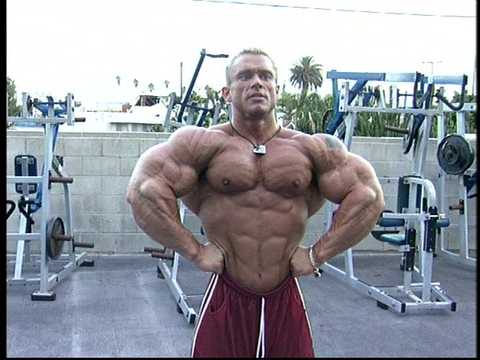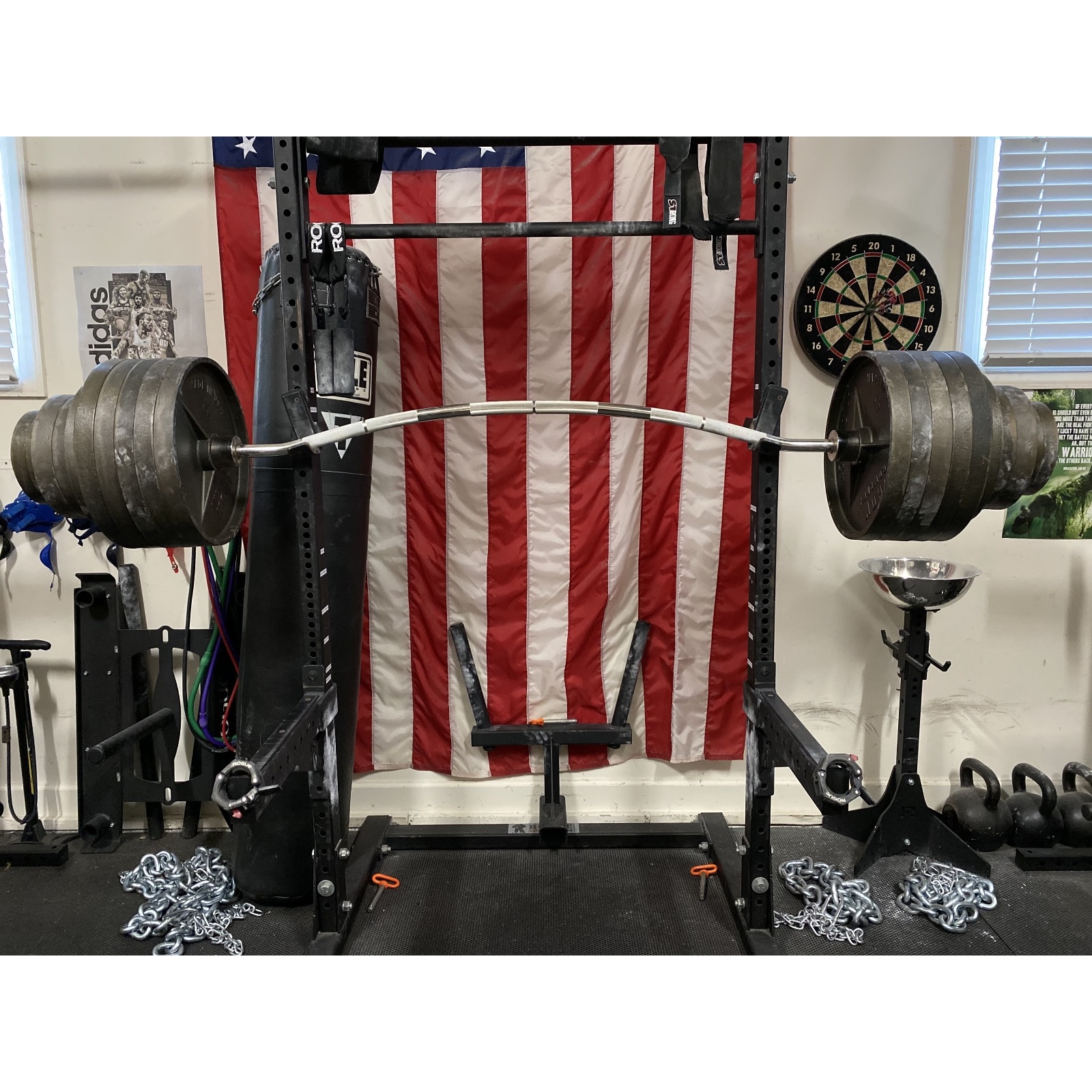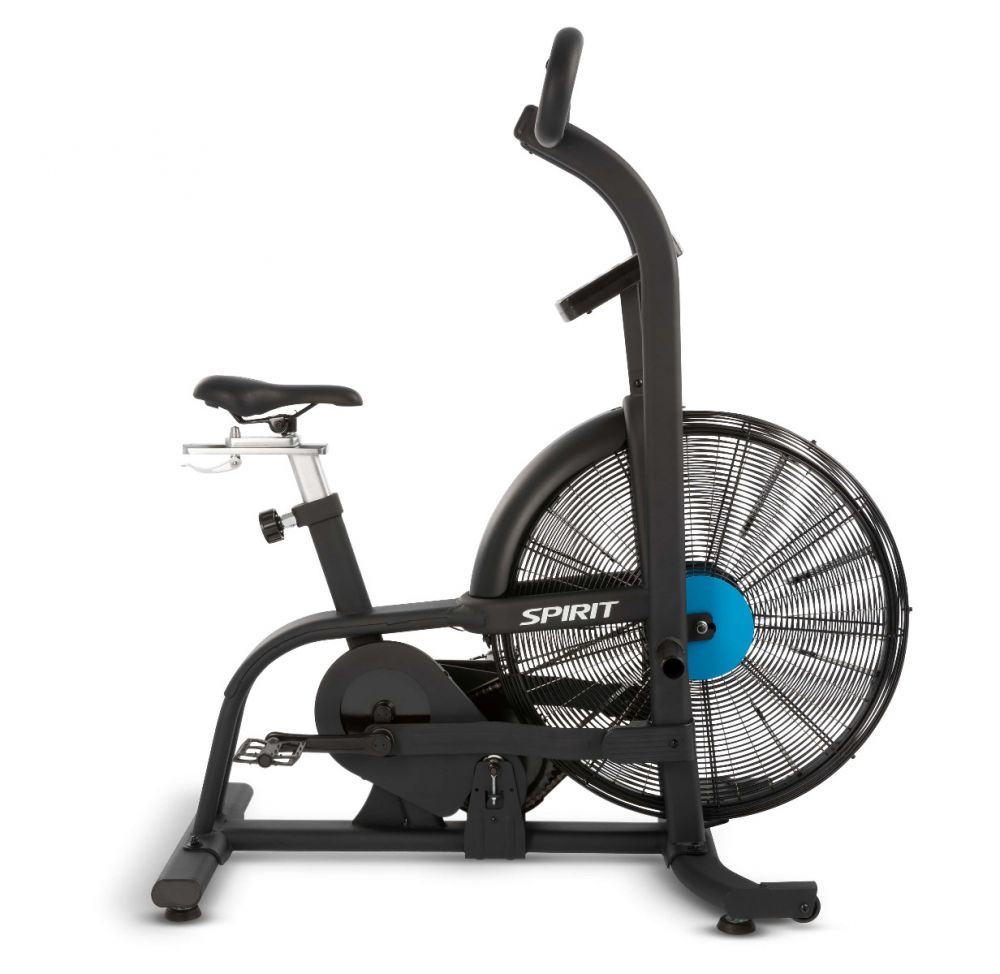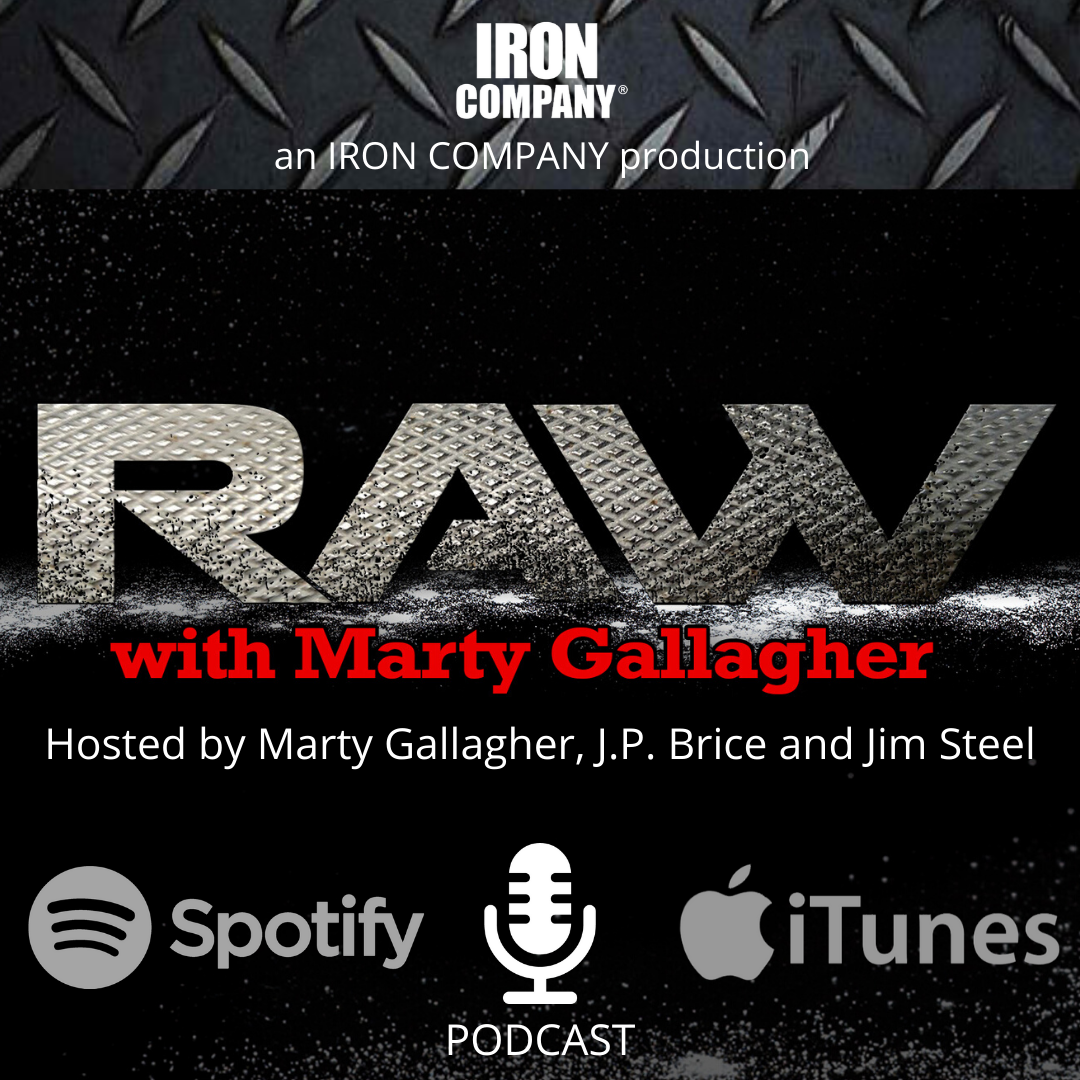
Creating Contrast For Radical Physiological Transformation
Without contrast, there can be no progress
Contrast King: Bodybuilder Lee Priest (above) would forcibly push his off-season bodyweight to over 280-pounds before whittling down to the 220-pounds shown in the photo. From the off-season extreme of regularly eating an entire bucket of KFC (by himself) he would pivot, creating dramatic contrast by shifting into an “in-season” lean out regimen. The secret to preserving hard-earned off-season muscle-mass while stripping off body fat is to reduce slowly and relentlessly. It would take Priest three months to get ripped.
The key to generating physiological progress where none exists is having the knowledge, ability, and willingness to institute appropriate changes. Humans are creatures of habit and all of us have preferences and favored ways of doing things. Our habits and patterns form us. As Aristotle noted, “We are what we do repeatedly.” If we want to change what we are, physically, we must alter, change, the things we do repeatedly.
If the goal is to transform the body to a dramatic degree, training modes and nutritional modes need be transformed to a dramatic degree. If the body is stagnant, unchanging, continuing to do what you are doing will not, cannot, induce radical improvements in physique and performance. To generate progress, measurable, mathematical progress, there must be some sort of physiological inducement. More of the same is not an inducement.
Slight changes to the current exercise and/or nutritional template, minor adjustments to what you are doing, are insufficient to unstick stagnation; slight changes are simply different flavors of what you are doing. What is needed is a dramatically different direction…assuming you have a dramatically different direction.
Most trainees have but one way of training and one nutritional mode: elite iron men, true transformational masters, shapeshifters, have a dozen training and nutritional strategies to select from. When a proven-effective routine runs out of progress, it is rotated out of the line-up and placed back in the closet of proven-effective methods for future use.
Elite trainees have such a big trick bag that they have no problem conjuring up a routine, a proven effective routine, that contrasts mightily with what they have been doing to that point. Creating contrast is an art form. What are the avenues of progress that can be tweaked or adjusted to unblock a stagnation logjam? First, define what you are doing – only then you can do the opposite.
Resistance Training
Frequency: double it, or cut it in half: How often do you train with weights? Three times a week? Want contrast? Shift to six sessions per week. Do you train five times a week? Reduce to twice. Get the idea? Obviously, the content of each session will have to be adjusted. Those that train often get a boost by cutting the volume in half; suddenly, muscles never fully rested are trained fresh. More exercises are done in longer, less frequent sessions. Conversely, if you are training 2-3 times per week, double the sessions. To create contrast, short sessions are done more often, spreading the effort out. Whatever frequency you use and have become comfortable with, rotate it out of the line-up. Do more or do less, do not do the same.
Switch out every exercise: Everyone of us has our preferred barbell and dumbbell exercises and our preferred way of doing them. Trainees will naturally prefer certain set and rep sequences. Generally speaking, training routines should be rotated every 4-6 weeks – with the understanding that if a routine is delivering results, don’t change it! Never arbitrarily curtail a training routine that is producing results. Having said that, one way to goose progress is to change every exercise you do: if you low-bar back squat to parallel, switch to front squats; if you have been living in a steady diet of barbell touch-and-go benching – how about 4-6 weeks of dumbbell-only paused benching? The best way for an exercise to feel fresh is to get away from it for a while.
Radically alter sets and reps: When the goal is to create resistance training contrast, one surefire way is to switch up the reps and sets. Cut the reps in half if they are high – or double them if they are low. Have you been working up to one, all out top set? Shift to multiple top static sets with slightly lesser poundage. Change exercise technique to create exercise contrast. Shift from conventional deadlift to sumo deadlift, perform conventional deadlifts standing on a box. Be inventive. Spending a lot of time doing preacher curls and cable lateral raises is not going to bust you through to the next level of muscle and power. Don’t waste a lot of time on minor exercises. Pick the best exercises available that you are not doing. Determine what your favored set and rep ranges are and get away from them for a while! Take a vacation from your usual way of training.
Emphasize the eccentric negative: In the arena of absolute strength, the eccentric portion of a repetition, the negative, is emphasized. By consciously resisting the eccentric, results are amplified. The muscle-building, strength-infusing attributes of a properly performed negative, a resisted eccentric, creates “coiled strength,” the required precursor to an explosive concentric. The more tension generated while “pulling down” a negative, the greater the explosive energy released to commence the concentric. The critical phase of every limit set is when eccentric (instantaneously) becomes concentric. Leverage is at its worst shifting at the instant we shift from eccentric to concentric. Perhaps the greatest resistance training contrast you can create is shifting from unresisted to resisted negatives. Do not throw away the muscle-building negative!
Hook up the speedometer: A goodly percentage of the weight training populace are deficient in fast-twitch muscle fiber. When they lift, regardless the lift, they never leave low gear. These trainees use a single rep speed: slow. They find “exploding” a foreign concept and apparently have little or no fast-twitch fiber. When eccentric becomes concentric, these men perform the concentric at the same speed as the controlled eccentric. There is no discernable explosion in the concentric. Our training group hooked a device to the barbell that measures velocity, it is a barbell speedometer. Once you have a barbell speedometer, you can create velocity benchmarks. Whatever the speedometer registered the goal was to push subsequent reps faster on every subsequent set. The grinders were clocking in with 4.2 on the radar gun in the squat. By comparison, multi-time world champion Kirk Karwoski, our training partner, was moving 650 at 9.1, faster than our grinders can move 135. The inexpensive speedometer created a terrific contrast for our grinders; we got them consciously trying to move the concentric with greater velocity. This emphasis on speed took our grinders to new levels of muscle. Want to create training contrast? Obtain a velocity measuring device and focus on getting explosive!
Cardio Training
Strap-up: Would you lift weights without knowing the poundage? Why would you do cardio exercise without knowing the impact the exercise is having on the heart rate? Why stay purposefully ignorant of the heart rate in relation to the exercise being done? A heart rate monitor enables us to assign a numerical value to aerobic intensity. By being able to assign value to intensity, an athlete can periodize aerobic exercise in the same manner and fashion resistance training is periodized. Frequency, duration, mode (exercise type) and intensity are logged and coordinated. Could there be a greater contrast then between those that use this marvelous technological tool - and those that don’t? The information provided by the heart rate monitor is invaluable; a prerequisite for proper periodized preplanning.
Stand-in-place cardio: Want to engage in effective cardio without using a cardio machine such as a treadmill, exercise bike or elliptical trainer? Try jumping rope, a simplistic tool that in the right hands will give you all the cardio stress you can handle. Put a light kettlebell or a pair of dumbbells into continual motion for extended periods. Try repetition clean and presses with tiny dumbbells; do as many reps as you can. Immediately shift to squats; rep out on squats, then start rowing the small bells. Fifteen minutes of continual motion using light dumbbells in a variety of exercises, each taken to failure before shifting to another exercise, is an incredibly effective way to elevate the heartrate. Do you have four flights of stairs in your apartment building? Do you have a steep hill in your neighborhood? Power walking up flights of stairs or a steep incline dramatically spikes the heart rate. 20-minutes goes by fast when you really exert. For cardio contrast, put variety in your cardiovascular activity.
Steady state all the time? BURST! Most aerobic participants go for an extended duration (30-60 minutes) using a steady pace. Steady-state cardio allows the athlete to extend the session duration. To optimize efficiency, the steady-state pace hovers just below the oxygen-debt threshold. The ideal cardio contrast is to switch from steady-state to burst cardio, also called interval cardio. Burst cardio is essentially “sprint, recover, sprint again,” do so until the predetermined session duration is reached. Regardless the aerobic mode, be it swimming or riding a fan bike, instead of seeking to attain a steady pace for longer durations, go shorter and faster. Instead of hovering just below the oxygen-debt threshold, sprint until oxygen debt shuts the effort down. No greater contrast could be created.
Fasted cardio: If the athlete engages in a sweaty, intense cardio session after waking up, coming off the sleep-fast (we don’t eat while sleeping,) the body burns through its residual glycogen and begins oxidizing stored body fat. Go to any hardcore training facility when it opens in the morning and you will see a cadre of high-level bodybuilders performing “fasted cardio.” Psychologically, getting it together to get out of bed and jump into a sweat-inducing exercise session, is the ideal way to start the day. Early morning aerobic exercise of sufficient intensity spikes the metabolism, the rate at which the body burns calories. The metabolism will stay accelerated for hours after an intense aerobic session. An accelerated metabolism is beneficial on every level. Fasted cardio is smart and effective and a terrific contrast to tacking a half-ass cardio session onto the end of an evening lifting session.
Sweat! You would be amazed at how many aerobic exercisers do not work hard enough to break a sweat. Amongst hardcore trainees, the type that have successfully engineered their own dramatic transformation, sweat is the key indicator that the degree of aerobic intensity is sufficient to improve fitness and burn off body fat. Sweating is also an excellent indicator that the body’s excretory system is functioning as intended. Sweat also acts as an intensity benchmark: when you start to sweat you have generated a dramatically elevated heart rate. Put another way – are you really doing “aerobic exercise” if your degree of intensity is insufficient to break a sweat? Could there be a greater contrast then morphing from no-sweat cardio into sweat-drenched cardio?
About the Author
As an athlete Marty Gallagher is a national and world champion in Olympic lifting and powerlifting. He was a world champion team coach in 1991 and coached Black's Gym to five national team titles. He's also coached some of the strongest men on the planet including Kirk Karwoski when he completed his world record 1,003 lb. squat. Today he teaches the US Secret Service and Tier 1 Spec Ops on how to maximize their strength in minimal time. As a writer since 1978 he’s written for Powerlifting USA, Milo, Flex Magazine, Muscle & Fitness, Prime Fitness, Washington Post, Dragon Door and now IRON COMPANY. He’s also the author of multiple books including Purposeful Primitive, Strong Medicine, Ed Coan’s book “Coan, The Man, the Myth, the Method" and numerous others. Read the Marty Gallagher biography here.




